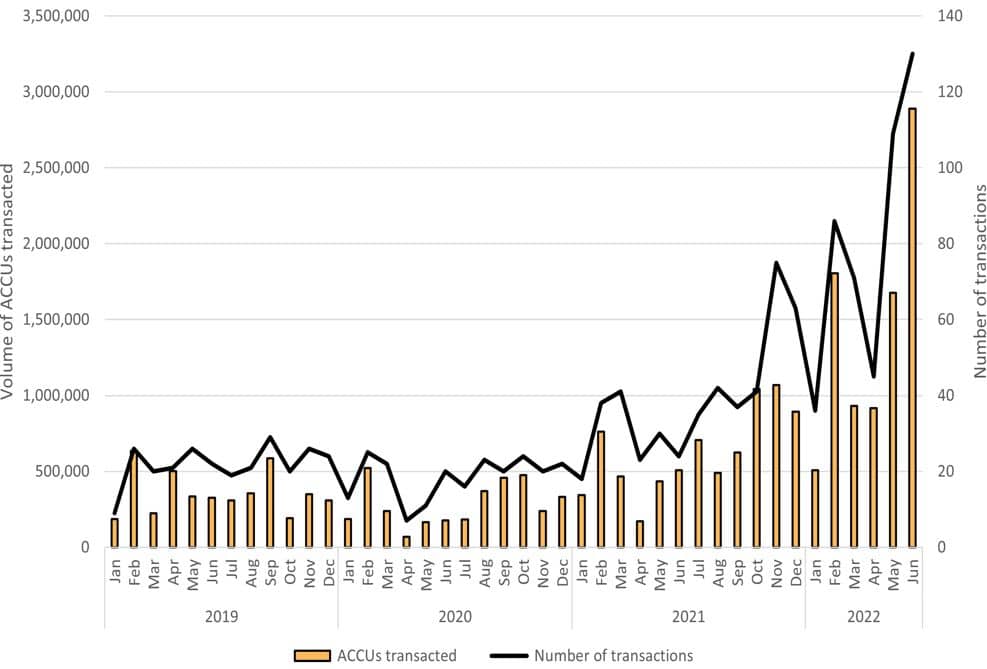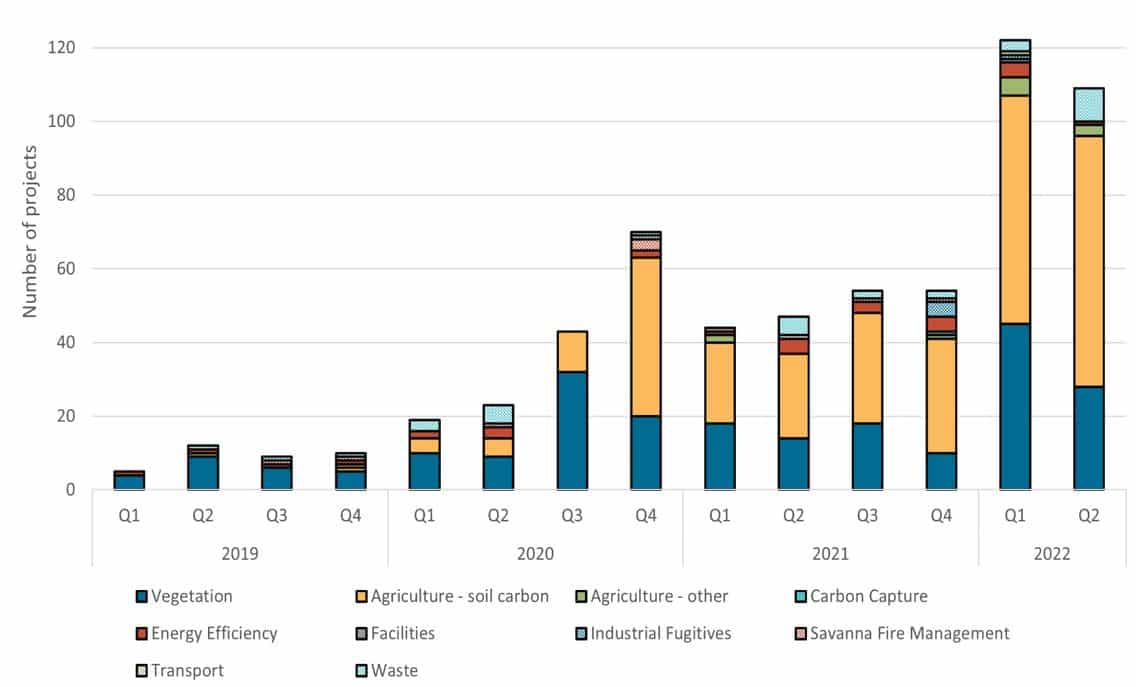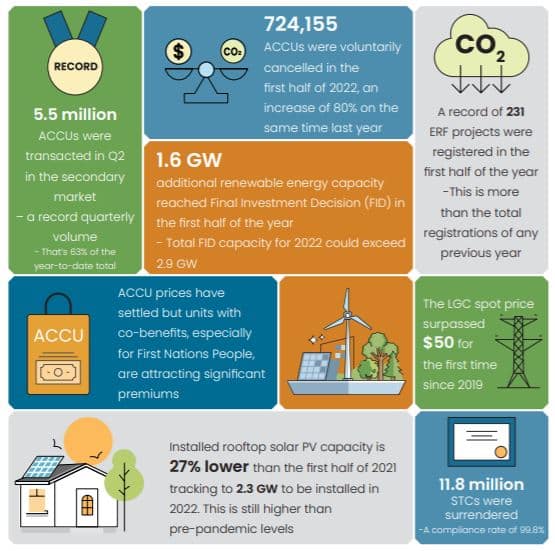A record volume of Australian carbon credits were traded in the second quarter, indicating that the market is maturing despite growing criticisms.
The Australian Carbon Credit Units (ACCUs) scheme is a voluntary carbon market mechanism that seeks to incentivize companies to cut their footprint.
It has been under increased scrutiny with skeptics claiming it’s a scam. Lack of additionality of ACCUs is the biggest concern that they pointed out.
But amid the boiling criticism, the Aussie carbon market performed at record levels.
ACCU Carbon Market Q2 2022 Achievements
More volume was transacted in the ACCU market in Q2 2022 than in any previous quarter.
- The total transaction volume of 5.5 million ACCUs – 4x more than Q2 2021.

Comparing June 2021 to June 2022 there was a 5-fold increase in carbon credits traded.
Even the number of ERF (Emissions Reduction Fund) projects (231) registered during the period also reached a new record, with 68 new Soil carbon projects getting registered.

Generic ACCU spot prices also jumped 15% over the quarter to reach $35.10. ACCU price with co-benefits is also rising, especially for First Nations People.
Large-scale renewables investment maintains strength while small-scale solar PV is stable at the lower level seen in Q1.
Here are the other major highlights of the Aussie carbon market in Q2.

Labor’s Climate Change Bill Signed into Law
With the recent change in Australia’s federal government, there has also been a shift in the nation’s position on climate change.
Australia’s parliament had passed the Labor government climate change legislation. The new law pledges to cut carbon emissions by 43% by 2030, define a process to ramp it up, and the goal of net zero by 2050.
Commenting on the bill’s passage, Climate Change and Energy Minister Chris Bowen said that:
“The passage of the climate change legislation sends a message to the world that Australia is serious about driving down emissions, and serious about reaping the economic opportunities from affordable renewable energy.”
The law, supported by the Greens party and independent senators, marked a first step on climate action by the Labor government. Still, it will continue to face tougher challenges to pass more climate-related bills.
But industry groups welcomed the legislation after over a decade of uncertainty in climate policy. Some noted that it will give Aussie businesses and industry more clarity in their climate actions.
Plus, it will also reform the existing “safeguard mechanism” that puts a cap on the biggest industrial polluters. The Greens said they will back this up by blocking any new coal mines and natural gas projects proposals.
Meanwhile, the Climate Change Authority will recommend future climate targets.
These things are useful in serving Australia’s climate policymaking. Yet, there are some important elements that are not included in the bill.
One of them is a long-term roadmap to net zero emissions.
Australia’s Journey to Net Zero
With the climate bill passed, attention will soon shift to Australia’s 2035 emissions target.
The Climate Change Authority recommends that target and new targets every 5 years from then on.
While it’s a good process to suggest an interim target, the country also needs to draw a forward trajectory beyond the next five-year period.
And that’s because investments in Australian carbon credits that are most impactful require longer timescales.
This net zero road mapping is critical in tackling significant matters like these two points:
- Targets for 2040 and beyond as the nation moves to net zero
- The gap between remaining emissions and removing them, and what solutions to employ, e.g. nature-based or technological
The Climate Change Authority may conduct this analysis and map out possible net zero scenarios. But its recommendations would have better standing with a legal requirement attached.
All that said, the new emission reduction target improves a lot on the previous government’s target. And enshrining it in law sends an important message.
It makes net zero emissions options more investable while telling the world that Australia is back on climate change action.
The new law is expected next year, with a target implementation on July 1.

